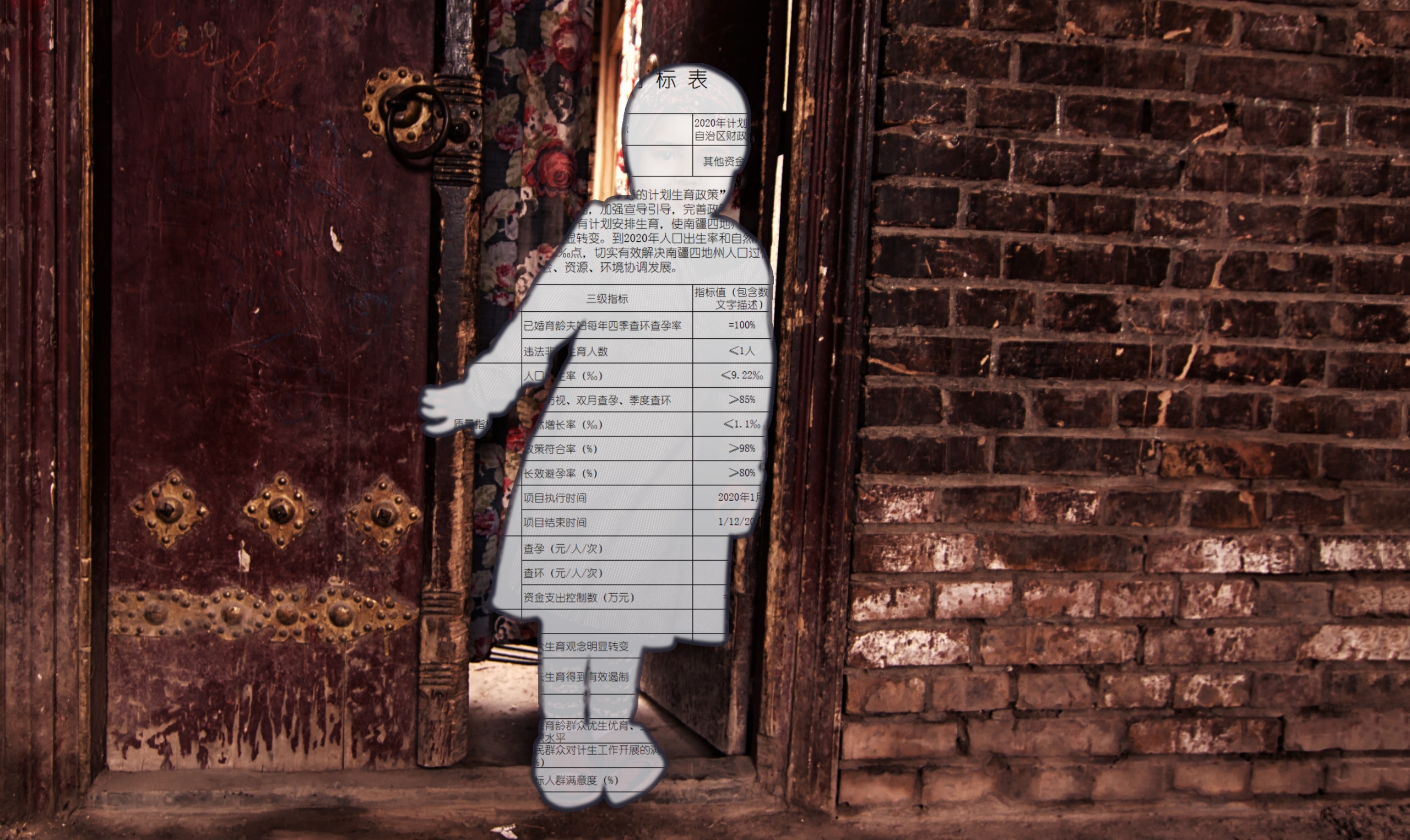Family De-planning: The Coercive Campaign to Drive Down Indigenous Birth-rates in Xinjiang
In this report, we provide new evidence documenting the effectiveness of the Chinese government’s systematic efforts to reduce the size of the indigenous population of Xinjiang through a range of coercive birth-control policies.
Using the Chinese government’s own publicly available statistics, we have compiled a dataset of county-level birth-rates (natality) across 2011-2019. We then marshal this data to analyse trends across nationalities and spatial regions in Xinjiang, before and after the 2016 crackdown, and comparatively with other countries as recorded in the UN population dataset. Finally, we place these statistics in context through our analysis of county-level implementation documents and other official Chinese language sources which have been previously overlooked.
In 1979, Deng Xiaoping launched the “one child policy” and created a complex set of bureaucratic institutions and practices for controlling population growth. Party officials rather than women would decide what they did with their bodies.
The one-child policy has seen a dramatic drop in China’s fertility rate and unleashed new concerns about a looming demographic crisis. Yet the instinct to control remains. As Party officials are loosening family-planning rules on Han women, they are simultaneously cracking down on the reproductive rights of Uyghur and other indigenous nationalities in Xinjiang Uyghur Autonomous Region (XUAR) over perceived fears of instability and uneven growth.
In the name of stability and control, the CCP under President Xi Jinping is seeking to fundamentally transform the social and physical landscape of Xinjiang. This includes the construction of hundreds of prison-like detention centres and the mass internment of Uyghurs, Kazakh and other indigenous nationalities; a regime of highly intrusive and near constant surveillance; the erasure of indigenous culture, language and religious practices and sites; and mandatory job assignments that are indicative of forced labour; among other now well-documented human rights abuses.
Key Findings
Beginning in April 2017, Chinese Communist Party authorities in Xinjiang launched a series of “strike-hard” campaigns against “illegal births” with the explicit aim to “reduce and stabilise a moderate birth level” and decrease the birth-rate in southern Xinjiang by at least 4.00 per thousand from 2016 levels. This followed years of preferential exceptions from family-planning rules for indigenous nationalities.
The crackdown has led to an unprecedented and precipitous drop in official birth-rates in Xinjiang since 2017. The birth-rate across the region fell by nearly half (48.74 percent) in the two years between 2017 and 2019.
The largest declines have been in counties where Uyghurs and other indigenous communities are concentrated. Across counties that are majority-indigenous the birth-rate fell, on average, by 43.7 percent in a single year between 2017 and 2018. The birth-rate in counties with a 90 percent or greater indigenous population declined by 56.5 percent, on average, in that same year.
In 2017, the Chinese government’s approach to birth control among minority nationalities shifted from “reward and encourage” towards a more coercive and intrusive policing of reproduction processes. Hefty fines, disciplinary punishment, extrajudicial internment, or the threat of internment were introduced for any “illegal births.” Family-planning officials in Xinjiang were told to carry out “early detection and early disposal of pregnant women found in violation of policy.”
While the Chinese government argues it has adopted a uniform family-planning policy in Xinjiang, the county-level natality data suggests these policies are disproportionately affecting areas with a large indigenous population, meaning their application is discriminatory and applied with the intent of reducing the birth-rate of Uyghurs and other religious and ethnic minorities. This policy also stands in stark contrast to the loosening of birth control restrictions elsewhere in China.
Policy implementation documents from Xinjiang explicitly set birth-rate targets that are among the lowest in the world, and the birth-rate has declined from a rate similar to those in neighbouring countries such as Mongolia or Kazakhstan to only slightly higher than that of Japan, where the low birth-rate is seen as a “national crisis.”
The sharp drop in birth-rates in Xinjiang (a region with a population of nearly 25 million) is proportionally the most extreme over a two-year period globally since 1950. Despite notable contextual differences, this decline in birth-rate is more than double the rate of decline in Cambodia at the height of the Khmer Rouge genocide (1975-79).
The 1948 Convention on the Prevention and Punishment of the Crime of Genocide, to which China is a signatory, prohibits states from “imposing measures intended to prevent births within the group,” as an aspect of the physical element to genocide. Our analysis builds on previous work and provides compelling evidence that Chinese government policies in Xinjiang may constitute an act of genocide; however further research is required to establish the intent and mental element of this crime. We call for the Chinese government to give researchers, journalists and human rights experts full and open access to Xinjiang.
Download full report
Readers are encouraged to download the report to access our full findings.
Acknowledgements
We would like to thank our external peer reviewers, Dr Timothy Grose, Dr Adrian Zenz, Dr Stanley Toops, and Peter Mattis, for their comments and helpful suggestions. Darren Byler, Timothy Grose and Vicky Xu also generously shared with us a range of primary source materials. We’re also grateful for the comments and assistance provided within ASPI by Michael Shoebridge, Fergus Hanson, Danielle Cave, Kelsey Munro and Samantha Hoffman and for crucial research assistance from Tilla Hoja and Daria Impiombato. This research report forms part of the Xinjiang Data Project, which brings together rigorous empirical research on the human rights situation of Uyghurs and other non-Han nationalities in the XUAR. It focuses on a core set of topics, including mass internment camps; surveillance and emerging technologies; forced labour and supply chains; the CCP’s “re-education” campaign and deliberate cultural destruction and other human rights issues.
The Xinjiang Data Project is produced by researchers at ASPI’s International Cyber Policy Centre (ICPC) in partnership with a range of global experts who conduct data-driven, policy-relevant research. The project is predominantly funded by a January 2020-October 2021 US State Department grant. The Xinjiang Data Project also hosts ASPI ICPC projects funded by the UK Foreign and Commonwealth Office (such as ‘Uyghurs for Sale’ in March 2020) and projects with no core funding (such as ‘Strange Bedfellows on Xinjiang’ in March 2021). The work of the ICPC would not be possible without the financial support of our partners and sponsors across governments, industry and civil society.
What is ASPI?
The Australian Strategic Policy Institute was formed in 2001 as an independent, non‑partisan think tank. Its core aim is to provide the Australian Government with fresh ideas on Australia’s defence, security and strategic policy choices. ASPI is responsible for informing the public on a range of strategic issues, generating new thinking for government and harnessing strategic thinking internationally. ASPI’s sources of funding are identified in our annual report, online at www.aspi.org.au and in the acknowledgements section of individual publications. ASPI remains independent in the content of the research and in all editorial judgements.
ASPI International Cyber Policy Centre
ASPI’s International Cyber Policy Centre (ICPC) is a leading voice in global debates on cyber, emerging and critical technologies, issues related to information and foreign interference and focuses on the impact these issues have on broader strategic policy. The centre has a growing mixture of expertise and skills with teams of researchers who concentrate on policy, technical analysis, information operations and disinformation, critical and emerging technologies, cyber capacity building, satellite analysis, surveillance and China-related issues. The ICPC informs public debate in the Indo-Pacific region and supports public policy development by producing original, empirical, data-driven research. The ICPC enriches regional debates by collaborating with research institutes from around the world and by bringing leading global experts to Australia, including through fellowships. To develop capability in Australia and across the Indo-Pacific region, the ICPC has a capacity building team that conducts workshops, training programs and large-scale exercises for the public and private sectors.
We would like to thank all of those who support and contribute to the ICPC with their time, intellect and passion for the topics we work on.
If you would like to support the work of the centre please contact: icpc@aspi.org.au
Important disclaimer
This publication is designed to provide accurate and authoritative information in relation to the subject matter covered. It is provided with the understanding that the publisher is not engaged in rendering any form of professional or other advice or services. No person should rely on the contents of this publication without first obtaining advice from a qualified professional.
© The Australian Strategic Policy Institute Limited 2021
This publication is subject to copyright. Except as permitted under the Copyright Act 1968, no part of it may in any form or by any means (electronic, mechanical, microcopying, photocopying, recording or otherwise) be reproduced, stored in a retrieval system or transmitted without prior written permission. Enquiries should be addressed to the publishers. Notwithstanding the above, educational institutions (including schools, independent colleges, universities and TAFEs) are granted permission to make copies of copyrighted works strictly for educational purposes without explicit permission from ASPI and free of charge.
First published May 2021. ISSN 2209-9689 (online), ISSN 2209-9670 (print).
Funding statement: Funding for this report was provided by the US State Department.

 mimo khair/Flickr. Note: The face of the young girl is a composite and comprises mostly an artifical intelligence generated face.
mimo khair/Flickr. Note: The face of the young girl is a composite and comprises mostly an artifical intelligence generated face.  mimo khair/Flickr. Note: The face of the young girl is a composite and comprises mostly an artifical intelligence generated face.
mimo khair/Flickr. Note: The face of the young girl is a composite and comprises mostly an artifical intelligence generated face. Claudia Chinyere Akole 2021
Claudia Chinyere Akole 2021 ‘Silhouettes in the sky’, Marcus McGregor Cassady.
‘Silhouettes in the sky’, Marcus McGregor Cassady. https://www.flickr.com/photos/foto_db/12337034435/in/photolist-jNbwwg-Xu7nDL-RaBTGZ-2SMgZ-5PH5YS-Lr47HS-8Np8jL-fNrS9k-krwJH-6cUXWs-qrYMEq-23qJ1ti-s8FNZ-dUcgM-9udsUA-db125n-8Nm3WF-ejTNxP-4tkdym-348MiH-anM19p-6HNdSV-dg4gpX-9N23rg-KVAKNK-FYEJr-S34dz-348M8R-q1Cpo-LGZzzG-7zSJxe-LGZDhw-KVAY5D-KVBmiX-dg4yh2-W2aaqm-93hsA6-6cUYSj-5o5xuN-aLhXwB-LPvsbG-q1zBx-LGZwvA-5PJHC3-aaXJ9C-6wSf1H-4SBjyc-2WgsCR-5dqkcd-aLi3NB
https://www.flickr.com/photos/foto_db/12337034435/in/photolist-jNbwwg-Xu7nDL-RaBTGZ-2SMgZ-5PH5YS-Lr47HS-8Np8jL-fNrS9k-krwJH-6cUXWs-qrYMEq-23qJ1ti-s8FNZ-dUcgM-9udsUA-db125n-8Nm3WF-ejTNxP-4tkdym-348MiH-anM19p-6HNdSV-dg4gpX-9N23rg-KVAKNK-FYEJr-S34dz-348M8R-q1Cpo-LGZzzG-7zSJxe-LGZDhw-KVAY5D-KVBmiX-dg4yh2-W2aaqm-93hsA6-6cUYSj-5o5xuN-aLhXwB-LPvsbG-q1zBx-LGZwvA-5PJHC3-aaXJ9C-6wSf1H-4SBjyc-2WgsCR-5dqkcd-aLi3NB

 Cyber security graphic: iStockphoto/kutubQ
Cyber security graphic: iStockphoto/kutubQ